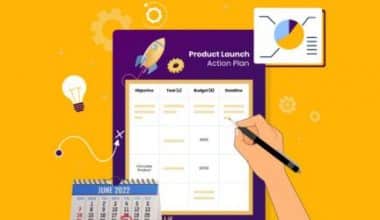It’s critical to do a total cost of ownership (TCO) analysis to assess the financial effects of implementing new technology in the workplace. In the field of information technology, determining TCO offers a more comprehensive understanding of the investment and the value of the product over its lifetime. Sadly, determining the TCO is frequently overlooked or undervalued but is crucial for estimating Return on investment.
Total Cost of Ownership
The cost of purchasing something plus the cost of maintaining it over its useful life is the total cost of ownership (TCO). The goal is to examine not just the initial acquisition cost but the overall cost that a corporation will incur to run an asset.
Maintenance, installation, implementation, downtime during installation and implementation, training needed to utilize the asset, disposal, licensing, and upgrades are all included in the running cost. It’s crucial to adapt future costs to today’s worth when figuring out operating costs, taking into consideration the value of the currency and the timing of the expenses. At the conclusion of the asset’s life, you should also deduct the salvage value.
Buyers frequently consider an item’s immediate price, also known as its purchase price, while deciding between alternatives in a buying decision. Yet they should also take into account its overall cost of ownership or long-term price. These are the long-term expenses incurred during the course of the product’s use and eventual disposal. The long-term value may favor the item with the lower total cost of ownership.
What is Total Cost of Ownership?
A fiscal assessment called total cost of ownership (TCO) is meant to assist administrators and bidders in figuring out the expenses that are both direct and indirect associated with a service. It is a budgetary control concept that’s applicable to endogenous growth theory, where it incorporates social costs or even full-cost accounting.
The total cost of ownership for manufacturing goes beyond the original manufacturing cycle time and cost to create parts, as it is generally contrasted to doing business abroad. TCO takes into account incentives created for an alternative technique as well as a range of cost-of-doing-business things, such as shipment and re-ship and possibilities. Tax subsidies, comprehensible language, delivers substantial, and vendor visits focused on the needs of the client are incentives and other factors.
The total cost of ownership (TCO) study takes into account all upfront and ongoing expenses as well as costs for eventual replacement or upgrading. Any capital investment’s viability is evaluated using a TCO analysis. It can be used by a company as a tool for comparing products and procedures. Moreover, credit markets and financial organizations employ it. The total cost of ownership (TCO) of an enterprise is directly tied to the entire costs of its assets and/or related systems across all projects and activities, providing an overview of its profitability over time.
Car Total Cost of Ownership
The expenses associated with acquiring an automobile remain long beyond the initial acquired investment. According to the American Automobile Association’s (AAA) most recent study on driving expenses, owning a car costs $9,666 annually on average. The actual costs can vary depending on a number of variables, including the kind of car, insurance, and upkeep. They all have an impact on how much it costs to own a car. You can more accurately assess if having a car fits your budget by being aware of and comprehending these issues before making a purchase.
The Total cost of ownership idea is easily adapted to the trucking industry and to the ownership of automobiles. For instance, the TCO specifies the cost of owning an automobile from the owner’s point of purchase through its use and upkeep until the owner relinquishes ownership. Consumers are assisted in selecting a car that best suits their needs and budget by comparative TCO studies between various models.
The following constitute a few of the crucial components to consider.
#1. Costs of degradation
Although depreciation isn’t technically a “cost,” it is important to be aware of because it will lower the value of your car as soon as you drive it off the lot. The depreciation of a car varies significantly. According to AAA, the average yearly cost of depreciation in 2022 will be $3,900. New cars degrade quickly, so buying a refurbished car and keeping it in good condition could help you reduce the rate of depreciation.
#2. Gasoline prices
Depending on the vehicle you drive, you’ll probably need to make regular payments for these things.
Gas
Fuel is one of the costs of driving a car with the most fluctuating prices, increasing virtually daily.
The good news is that average fuel prices frequently change depending on the kind and size of the car. Convertibles often have higher fuel economy than larger cars, such as tractors and SUVs, and paying attention to your gas purchases can help you save money at the tank.
#3. Insurance \sFinancing \sRepairs
Almost all states mandate some form of auto insurance. According to Rating, Consumers spend $1,570 on their full coverage insurance premiums each year. However, a number of variables, including the chosen coverage, the kind of car you drive, your maturity level, your driving history, and your region, affect the cost of insurance. You may spend more or less than the average rate depending on your situation and available coverage alternatives.
#4. Payment of fees and taxes
Registration of your car and possession of a valid license, both of which require payment of taxes and fees, are requirements for driving. The average auto owner will spend $675 in 2022 on licenses, registration, and taxes to lawfully operate their vehicle, according to AAA.
The method used to determine these fees, how frequently they must be paid, and how much they cost vary by state. Where you live and the type of fees you have to pay will decide how much you have to spend annually for this category.
#5. Costs of upkeep
However, according to AAA, the average monthly cost of repairs, maintenance, and tires for a new car is $121. Oil changes and tire rotations, which are typically performed every 4,000 miles or, in this case, three times annually, are examples of common maintenance expenses. The normal length of a manufacturer’s warranty is three years or 36,000 miles, whichever comes first.
Free up a few bucks for repairs if your automobile isn’t covered by insurance, whether you need them every month or not. This prevents you from receiving a surprise bill.
#6. Downtime has a cost
Equipment downtime affects the average manufacturer for 800 hours a year, or more than 15 hours each week. That downtime has a price, and the price is not cheap. For instance, when the production line stops, the typical automaker loses $22,000 every minute. It adds up very rapidly. Unscheduled maintenance overall costs firms in the manufacturing industries up to $45 billion annually.
Calculate Total Cost of Ownership
When comparing potential capital investment options, calculating the TCO is crucial for determining the greatest value. When considering capital investments, businesses frequently make the error of neglecting TCO and placing all of their attention on the initial costs. Be sure to take into account the various lifespans of the assets.
The TCO calculation takes a few implicit values into account. A cost is associated with each item, but numerous other factors will also affect how much money is spent. A simple computation and a more complicated calculation are both possible. Depending on the situation and the learning objective, you can employ each one differently.
The simplest computation takes into account three variables
Initial expense (I), ongoing expenses (M), and remaining expenses (R)
The calculation will be as follows:
TCO = I + M – R
The asset’s long-term cost is the remaining cost. The label price, or the amount you will pay for the item, is the initial cost. The expenses incurred to make sure the asset is used over the long term are included in the maintenance cost. The asset’s long-term cost, represents the remaining expense. This final element aids in our calculation.
How Is the Total Cost of Ownership Calculated?
The total cost of ownership (TCO) can be estimated as the initial asset purchase price plus ongoing operating expenses. Finding a way to integrate new software with old solutions is one of the major challenges when buying any new software. The integration will be needed for everything from customer relationship management (CRM) applications to enterprise resource planning (ERP) software, and it can quickly become difficult and expensive.
Integrations typically have an upfront cost close to the development stage, and the price is based on things like the complexity of the integration and the required number of integrations. For instance, calculating a car’s total cost of ownership for gasoline
Total miles driven divided by total gallons = Miles per gallon
What is TCA and TCO?
The total cost of acquisition (TCA), a term used in managerial accounting, refers to all expenses incurred while purchasing goods, services, or assets. Typically, it consists of the item’s total payment plus any additional expenses associated with getting the item to the point of usage. Similarly, Total cost of ownership (TCO) refers to The cost incurred in purchasing any item is quantified by the term.
What Are the 3 Primary Cost Components in a TCO Analysis?
When contemplating a significant purchase, TCO can be a useful approach to analyzing the long-term costs of several solutions
When evaluating TCO, the purchase price, maintenance costs, and repair costs are the three key factors to take into account.
- Purchase price: The asset’s initial cost is represented by the purchase price. It covers the price of the actual item as well as any applicable taxes, shipping costs, and installation costs.
- Cost of maintenance: This is what it will cost to keep the asset in excellent operating order. It covers any fees related to the item’s anticipated maintenance charges as well as routine maintenance that is scheduled.
- Cost of repair: This is the price associated with repairing an asset after it malfunctions, including the price of parts and labor. It can be challenging to anticipate repairs.
How Do You Conduct a TCO Analysis?
It is paramount to conduct a TCO analysis before making any purchase. It can be done by adding the initial purchase value to direct, indirect, and other hidden costs in the TCO calculation methodology. After that, the value so determined is deducted from the asset’s anticipated residual or resale value.
Why Do We Need TCO?
Businesses can compare the short-term (purchase price) and long-term (total cost of ownership) costs of a system or product using a TCO analysis. When choosing the best vendor from a range of options, TCO helps in making an informed purchase decision. Generally speaking, a reduced total cost of ownership provides higher value over time.
What Is TCO Assessment?
TCO assessment comprises the cost of acquiring the necessary hardware and software, management and support, communications, end-user costs, and the potential cost of downtime, training, and other productivity losses.
What Are the Activities of TCO?
The total cost of ownership (TCO) is the average price paid for a technology system at any given time during one of its life cycle phases, including design, build, testing, deployment, operational support, and/or retirement. Several companies genuinely think of TCO as the result of developing a subpar IT system.
Final Part
The estimates for Total Cost of Ownership and Return on Investment play a role in effective budgeting when paired with Risk Analysis. Despite having substantial financing for information security, some firms nonetheless frequently have their security breaches. Why? The typical explanation is that the incorrect risks were addressed. They took bigger risks while spending money where it might not have been necessary.
Related Articles
- MAINTENANCE MANAGEMENT SYSTEMS: Definition, and Types
- What is Business: Definition, Concepts, and Characteristics
- OPERATING AGREEMENT: How To Create an Operating Agreement
- . Read Also: REVENUE MODEL; Defintion, Types, and Examples






